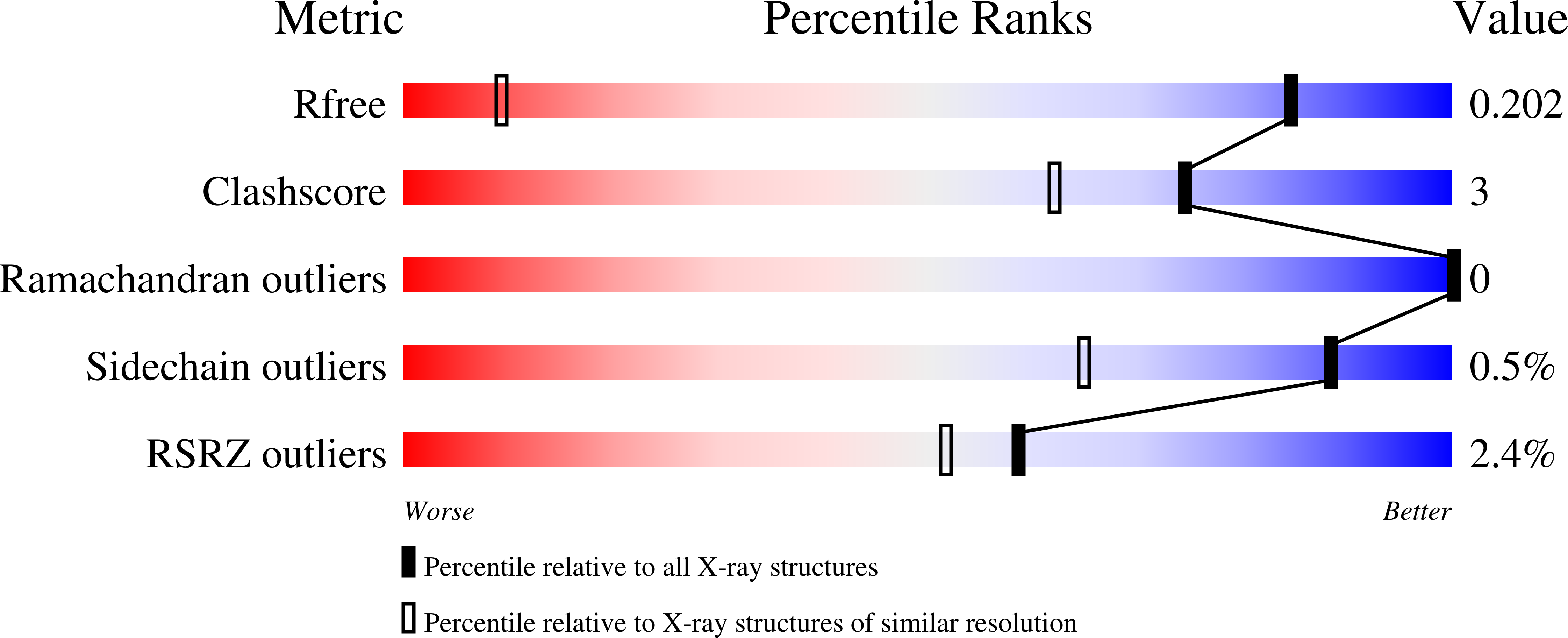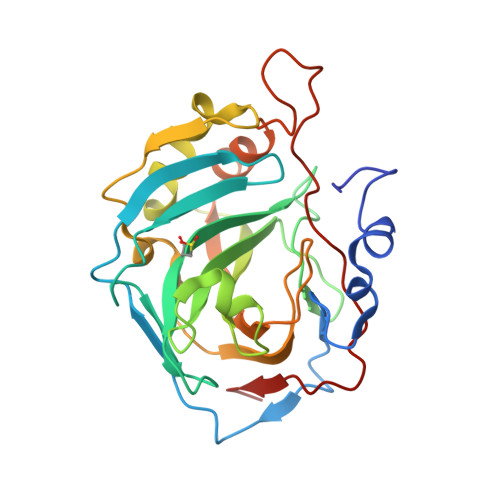A Dual Anchoring Strategy for the Directed Evolution of Improved Artificial Transfer Hydrogenases Based on Carbonic Anhydrase.
Stein, A., Chen, D., Igareta, N.V., Cotelle, Y., Rebelein, J.G., Ward, T.R.(2021) ACS Cent Sci 7: 1874-1884
- PubMed: 34849402
- DOI: https://doi.org/10.1021/acscentsci.1c00825
- Primary Citation of Related Structures:
7ONM, 7ONP, 7ONQ, 7ONV - PubMed Abstract:
Artificial metalloenzymes result from anchoring a metal cofactor within a host protein. Such hybrid catalysts combine the selectivity and specificity of enzymes with the versatility of (abiotic) transition metals to catalyze new-to-nature reactions in an evolvable scaffold. With the aim of improving the localization of an arylsulfonamide-bearing iridium-pianostool catalyst within human carbonic anhydrase II (hCAII) for the enantioselective reduction of prochiral imines, we introduced a covalent linkage between the host and the guest. Herein, we show that a judiciously positioned cysteine residue reacts with a p- nitropicolinamide ligand bound to iridium to afford an additional sulfonamide covalent linkage. Three rounds of directed evolution, performed on the dually anchored cofactor, led to improved activity and selectivity for the enantioselective reduction of harmaline (up to 97% ee ( R ) and >350 turnovers on a preparative scale). To evaluate the substrate scope, the best hits of each generation were tested with eight substrates. X-ray analysis, carried out at various stages of the evolutionary trajectory, was used to scrutinize (i) the nature of the covalent linkage between the cofactor and the host as well as (ii) the remodeling of the substrate-binding pocket.
Organizational Affiliation:
Department of Chemistry, University of Basel, BPR 1096, Mattenstrasse 24a, 4058 Basel, Switzerland.


















